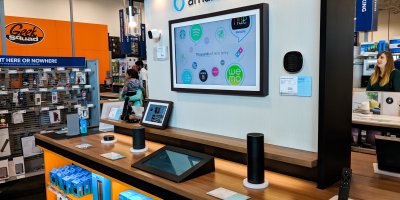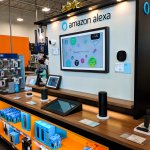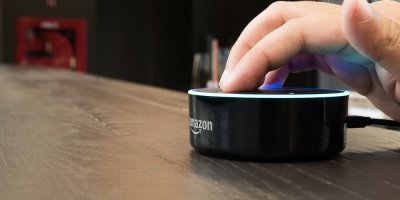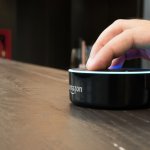
Virtual assistants on the rise. Source: Shutterstock
Gartner says the age of virtual employee assistants is coming
VIRTUAL assistants are convenient, intelligent, and Gartner says they’ll now take over the workplace by 2021.
According to recent forecasts, 25 percent of digital workers will use a virtual employee assistant (VEA) on a daily basis by 2021, up from the 2 percent predicted for this year.
The contact center was the pilot and testing ground for many adopters of virtual assistants, but with the democratization of artificial intelligence (AI) and the development of accurate and clever conversational user interfaces, different types of VA have arisen:
- virtual personal assistants (VPAs)
- virtual customer assistants (VCAs)
- virtual employee assistant (VEAs)
“We expect VEAs to be used by an increasing number of organizations over the next three years. Industries such as insurance and financial services are showing strong interest in piloting VEAs internally.
“We’ve also witnessed virtual assistants being used in IT, customer service, and information queries,” said Gartner Senior Director Annette Jump.
To be fair, the rise of VEAs started last year. Amazon Alexa for business made a debut, offering integrations with several critical business software such as Salesforce and Splunk — and showcases Condé Nast, Propel Insurance, and several others as clients.
A more commercial-grade VEA, the Nokia MIKA, helps engineers find answers as they perform complex tasks or diagnose problems. It’s customized for the communications industry and has seen quite a strong preference among enterprise tech users.
According to Gartner, the market for conversational platforms — VAs and chatbots — includes more than 1,000 vendors worldwide.
However, over the next couple of years, a race to provide new capabilities will result in the vendor landscape changing drastically.
“IT leaders looking to implement a conversation platform should determine the capabilities they need from such a platform in the short-term, and select a vendor on that basis,” said Jump.
Interestingly, Tencent just announced that it will launch a Siri-like virtual assistant for WeChat soon. To be christened Xiaowei, the assistant is expected to link to a plethora of Tencent’s own services such as QQ Music, however, in the future, it could become more of an enterprise application.
The company might be late to the party but given that Amazon Alexa and Apple Siri aren’t very popular in China, Xiaowei might actually find it easy to establish itself among the country’s 1.386 billion people.
Further to Gartner’s VEA forecasts, the company also predicts that, by 2023, 25 percent of employee interactions with applications will be via voice, up from under 3 percent in 2019.
Although most chatbots and VAs are still text-based, AI-enabled speech-to-text and text-to-speech hosted services are improving rapidly. As a result, deployment of voice-based solutions will grow.
“We believe that the popularity of connected speakers in the home, such as the Amazon Echo, Apple HomePod and Google Home, will increase pressure on businesses to enable similar devices in the workplace.
“While there are limitations on the actions that VPAs can perform, employees will readily expand the actions allowed as capabilities improve,” said Gartner VP Van Baker.
Gartner’s analysts cite the integration of VPA speakers in the enterprise is the partnership of Amazon with Marriott. The hotel operator uses Alexa-powered Echo VAs to assist with checkout procedures and management of rooms’ amenities.
According to experts, more of those use cases are likely to pop up across industries in the near future.
Voice interfaces free digital workers from having to use a mouse and keyboard when interacting with business applications. This freedom can benefit frontline workers greatly. “Enabling voice interaction with applications will ultimately enhance the digital dexterity of workers who have access to them,” said Baker.
READ MORE
- Ethical AI: The renewed importance of safeguarding data and customer privacy in Generative AI applications
- How Japan balances AI-driven opportunities with cybersecurity needs
- Deploying SASE: Benchmarking your approach
- Insurance everywhere all at once: the digital transformation of the APAC insurance industry
- Google parent Alphabet eyes HubSpot: A potential acquisition shaping the future of CRM






